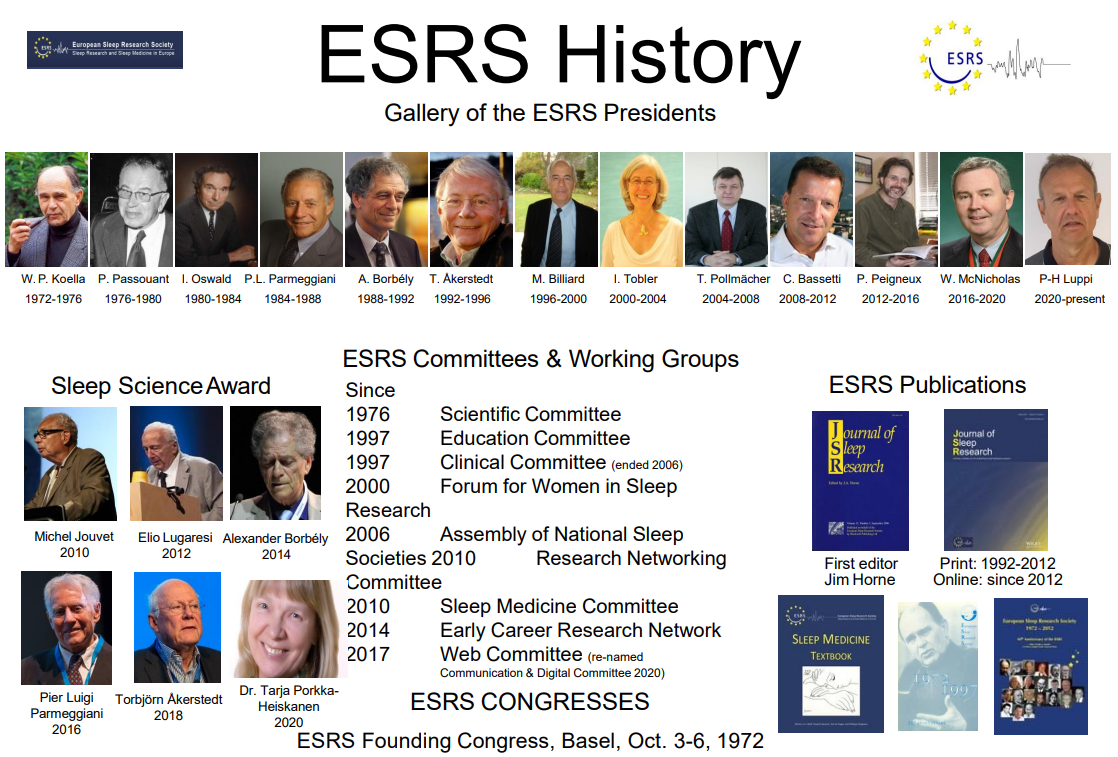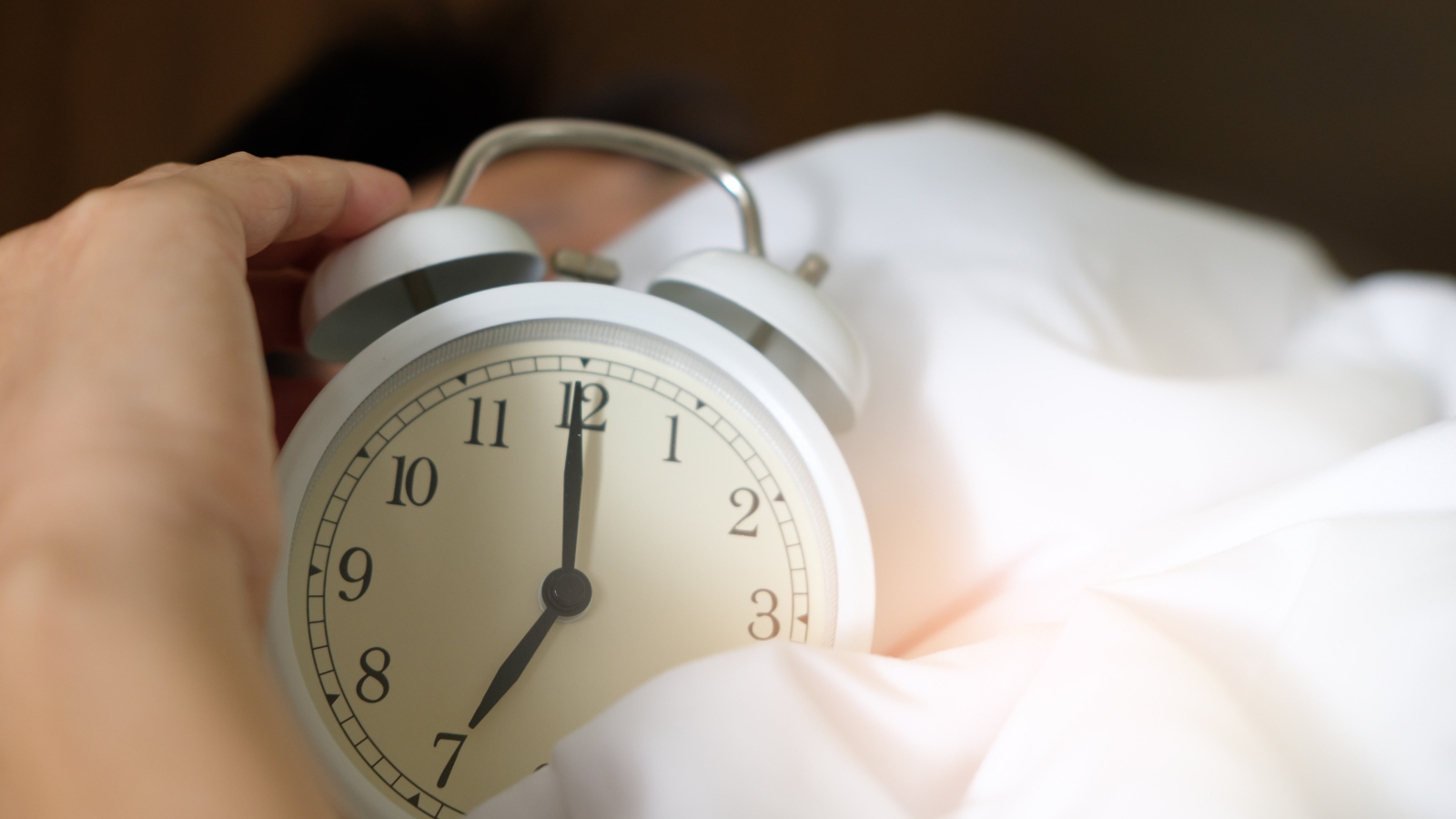Physiological Basis of Sleep: Circadian biology / Chronobiology
For this Sleep Science Friday, we bring you another chapter summary from the ESRS Sleep Medicine Textbook 2nd edition, “Circadian biology / Chronobiology” from the section Physiological Basis of Sleep.
Circadian biology / Chronobiology
Chronobiology is the science of biological rhythms, amongst which circadian rhythms with a nearly 24- hr period are the most relevant for human physiology and health. In mammals, the circadian timekeeping system is organized in a hierarchical manner, with a “master clock” in the hypothalamus receiving non-visual light inputs through specialized photoreceptors in the retina, in order to synchronize endogenous rhythms to the environmental light–dark cycle.
The sleep–wake rhythm is also normally entrained through photic and non-photic Zeitgebers to the 24-hr solar day, but inter-individual variants in period length, circadian amplitude, and phase or light sensitivity characterize different chronotypes, in which sleep occurs at a different circadian phase of entrainment. However, sleep timing and structure are not only under circadian control, but are finely regulated by a complex interaction between two oscillatory processes: an hourglass-like homeostatic mechanism depending on the prior duration of sleep and wakefulness (process S) and an intrinsic 24-hr rhythm driven by the circadian pacemaker (process C).
Alteration of the synergy between process S and C and disruption of internal circadian rhythms may not only lead to sleep–wake disturbances, but also be involved in the pathophysiology of several diseases, that represent the focus of research and clinical applications of circadian medicine.
Keywords:
biological clock, chronobiology, chronotypes, circadian medicine, circadian rhythms, circadian timing system, diurnal rhythms, intrinsically photosensitive retinal ganglion cells, light, two process model of sleep-wake regulation, melatonin, Zeitgeber
Learning Objectives:
- Learn about the research focus of chronobiology and the hierarchical organization of the circadian system.
- Understand the concept of circadian entrainment and the role of Zeitgebers, particularly light, in synchronizing internal and external time.
- Know the main biological characteristics that differentiate early from late chronotypes.
- Comprehend how the circadian and homeostatic processes interact in the regulation of sleep and wakefulness.
- Gain knowledge about the main interests, applications, and future prospects of circadian medicine.
Key Points:
- Circadian rhythms are self-sustained oscillations in biological or behavioural processes that show a nearly 24-hr period and are directly or indirectly controlled by circadian clocks. Clock genes are present in almost every cell and coordinate a complex regulatory network based on multiple negative and positive feedback loops.
- Photic and non-photic time signals (Zeitgebers) are essential in synchronizing endogenous circadian rhythms with cyclic environmental changes, in a process known as circadian entrainment.
- Light is the most important Zeitgeber, providing direct information about the 24-hr solar day to the master circadian clock, located in the hypothalamus, via the retina. However, light has also many other non-visual effects on human and animal behaviour, affecting alertness, cognition, mood, and sleep through different pathways.
- … you can read all key points and the full A.10 Circadian biology / Chronobiology chapter in the ESRS Sleep Medicine Textbook – order it here.
Summary by:
Christian Cajochen and Corrado Garbazza (2021). A. Physiological Basis of Sleep 10. Circadian biology / Chronobiology. In Bassetti, C., McNicholas, W., Paunio, T., & Peigneux, P. (Eds.). Sleep Medicine Textbook (2nd ed., pp. 123-134). Regensburg: European Sleep Research Society.
Recent publications from ESRS members
- Gorantla, Rodriguez and Ferri (2024). The evolution of REM sleep without atonia diagnostic thresholds in isolated REM sleep behavior disorder. J Clin Sleep Med.
- Dos Santos and Galie (2024). The Microbiota-Gut-Brain Axis in Metabolic Syndrome and Sleep Disorders: A Systematic Review. Nutrients.
- Schredl (2024). Church Dreams in a Long Dream Series of a Benedictine Nun. Pastoral Psychol.
- Choudhury et al. (2024). Validation of the RBD Symptom Severity Scale in the North American Prodromal Synucleinopathy Consortium. Neurology.
- Korman et al. (2024). Estimation bias and agreement limits between two common self-report methods of habitual sleep duration in epidemiological surveys. Sci Rep.
- Pires et al. (2024). Guidelines for the development, performance evaluation and validation of new sleep technologies (DEVSleepTech guidelines) – a protocol for a Delphi consensus study. J Sleep Res.
- Baldini et al. (2024). Eating disorders in narcolepsy type 1: Evidence from a cross-sectional Italian study. J Sleep Res.
- Bonsignore et al. (2024). REM sleep obstructive sleep apnoea. Eur Respir Rev.
- Sforza et al. (2024). Boosting obstructive sleep apnea therapy by non-pharmacological approaches: A network meta-analysis. Sleep Med.
- Zhang et al. (2024). Sleep and the Social Profiles of Individuals With Rett Syndrome. Pediatr Neurol.




